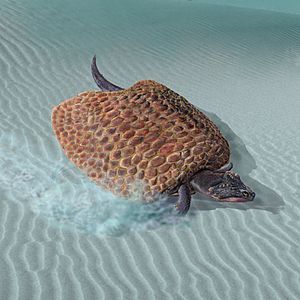Parahenodus facts for kids
Quick facts for kids Parahenodus |
|
|---|---|
 |
|
| An artist's illustration of Parahenodus atancensis | |
| Scientific classification | |
| Kingdom: | |
| Phylum: | |
| Class: | |
| Superorder: | |
| Order: | |
| Family: |
†Henodontidae
|
| Genus: |
†Parahenodus
De Miguel Chaves, Ortega & Pérez‐García, 2018
|
| Type species | |
| †Parahenodus atancensis De Miguel Chaves, Ortega & Pérez‐García, 2018
|
|
Parahenodus was a fascinating ancient reptile that lived a very long time ago. It is now extinct, meaning it no longer exists on Earth. Scientists only know about Parahenodus from a single skull found in Spain. This amazing discovery helps us learn more about life during the Upper Triassic period.
Contents
Discovering Parahenodus
The only known fossil of Parahenodus is a skull. This skull was found in Spain and was described by scientists in 2018. They named this new species Parahenodus atancensis.
What Was Parahenodus?
Parahenodus belonged to a group of extinct reptiles called placodonts. Placodonts lived in the water and had unique, flat teeth. These teeth were perfect for crushing the shells of creatures like clams and mussels. Parahenodus was also part of a family called Henodontidae.
When Did Parahenodus Live?
The skull of Parahenodus was found in rock layers from the Upper Triassic period. This means Parahenodus lived between 237 and 201 million years ago. During this time, the Earth looked very different, and many unique creatures roamed the land and seas.
Parahenodus's Relatives
Scientists believe Parahenodus was a very close relative to another placodont called Henodus. Think of them like cousins! Studying these related animals helps scientists understand how different species evolved over millions of years.

